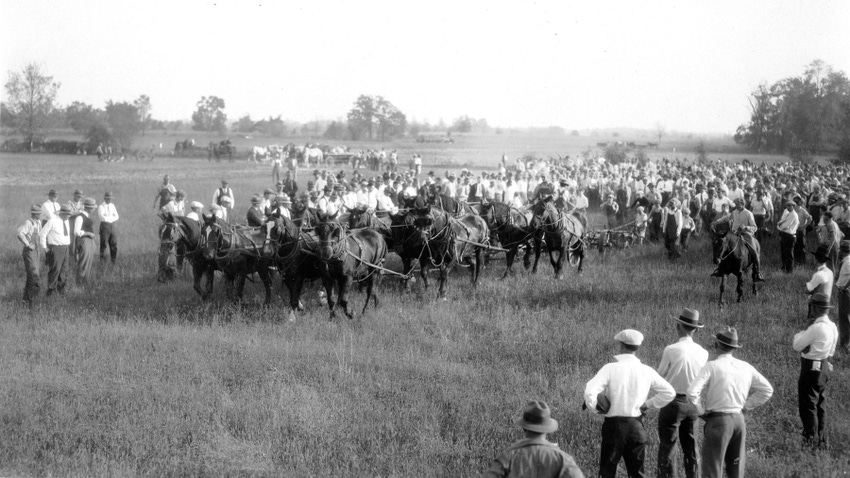
Jay Akridge has accepted many challenges during his professional career. With over 25 years of experience tied to the Purdue Ag Economics Department, he then served as dean of the College of Agriculture for nearly 10 years and Purdue provost for five years before returning to ag econ to teach and counsel students this year.
His most recent challenge was presenting a lecture to some 250 Purdue faculty, alumni, farmers and others in an esteemed lecture series earlier this spring. Akridge was the keynote speaker for the 2023 James C. Snyder Memorial Lecture, a series that has honored a highly touted former professor, James C. Snyder, for nearly 50 years.
Challenging topic
It wasn’t the crowd that concerned Akridge as much as the topic, he says. The title laid out the scope of the challenge: “Shaping the future of higher education? Becoming a land-grant university for our times.” In an era when people question the value of a college education and others quibble about whether Extension is still useful, his work was cut out for him.
“My goal was not to just deliver a talk about Purdue, but instead about the land-grant system in this country,” he explains. “To be fair, I am biased about land-grant colleges. I believe in the concept wholeheartedly. I have seen it work, and I have seen what land grants can accomplish when operated effectively.
“However, yes, there are challenges and headwinds pushing back at not only land grants, but all colleges today. They must be addressed, and we must look for the correct path forward.”
Back to the roots
“The first step is to understand why land-grant institutions were established, and why they have succeeded for over 150 years,” Akridge says. “Here are some comments from key legislation in history crafted by people who understood why this type of education was important.”
Foundation for learning. From the Morrill Act of 1862, by which Congress established land-grant colleges: “The leading object shall be, without excluding other scientific and classical studies and including military tactics, to teach such branches of learning as are related to agriculture and the mechanic arts, in such manner as the legislatures of the states may respectively prescribe, in order to promote the liberal and practical education of the industrial classes in the several pursuits and professions in life.”
Foundation for discovery. From the Hatch Act of 1887, by which Congress supported research at land-grant institutions: “To conduct original and other research, investigations and experiments on and contributing to the establishment and maintenance of … the agricultural industry in the United States, including researches basic to the problems of agriculture in its broadest aspects, and investigations as have for their purpose the development and improvement of rural home and rural life and the maximum contribution by agriculture to the welfare of the consumer.”
Foundation for engagement. From the Smith-Lever Act of 1914, which established the engagement function of university with the public, better known in the early days as Extension: “Cooperative agricultural extension work shall consist of the development and practical applications of research knowledge and giving of instruction and practical demonstration of existing or improved practices or technologies … to persons not attending or resident in said colleges in the several communities and imparting information on said subjects through demonstrations, publications and otherwise.”
Holes in the fence
By 1994, about 130 years since land grants were established, the Kellogg Commission on the Future of State and Land-Grant Colleges issued a report that outlined how these institutions could perform even better. Akridge believes what was true in 1994 is still true in many respects today.
Major findings included that to be an engaged institution, it must do three things:
1. Respond to today’s needs. “It must be organized to respond to the needs of today’s students and tomorrow’s, not yesterday’s.”
2. Enrich student experiences. “It must enrich student experiences by bringing research and engagement into the curriculum and offering practical opportunities for students to prepare for the world they will enter.”
3. Address community problems. “It must put its critical resources in knowledge and expertise to work on the problems which the communities served by that institution face.”
“Land-grant institutions had accomplished many things by the time that report was written, but times were changing,” Akridge says, “and the authors of the report could see that land-grant universities would need to recommit to their charge and adapt to modern times.”
Not everyone in leadership roles across the country saw things the same way. Not all changes were implemented everywhere. However, Akridge believes some people were paying attention. He uses a line from his late grandpa, T.R. Akridge, a Kentucky cattle producer, to make his point.
Akridge explains, “You would drive by a beautiful field of Hereford cattle with him, and he would say ‘Most people look at that field and see fat, slick cattle. I am looking for the holes in the fence.’
“’Holes in the fence’ in the U.S. education system — and in the land-grant system — were forming, but not everyone was seeing them.
“They see them now,” Akridge says. “We will take a closer look at what they are, and how they can be mended to keep land-grant institutions on track for the future.”
Editor’s note: This is the first in a series of articles featuring Jay Akridge’s views about college education and land-grant institutions.
About the Author(s)
You May Also Like




